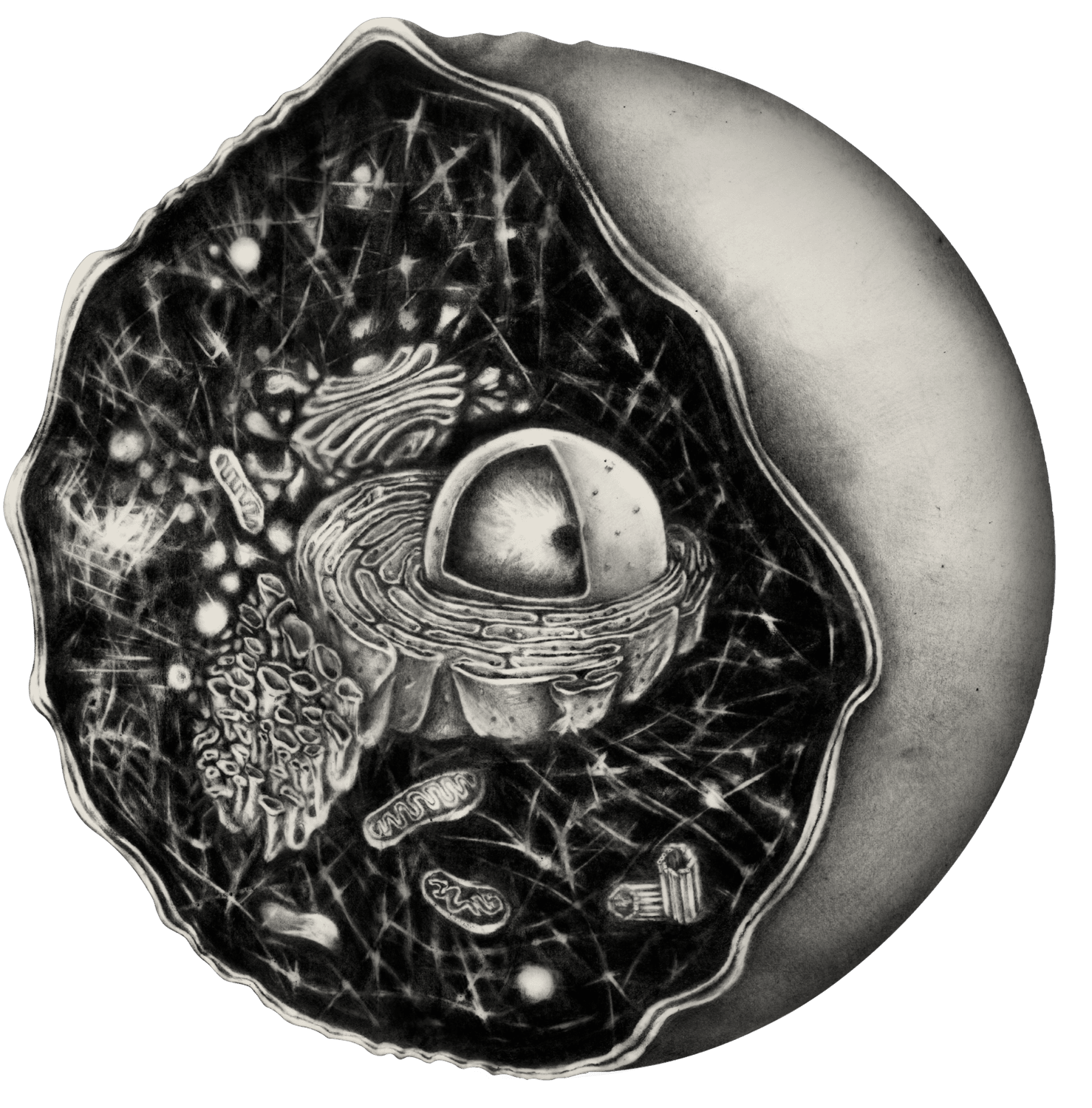Cellular physiology
The effects of Ginseng and its bioactive constituents on Cellular Homeostasis: Review of Ginseng's benefits for Mitochondrial Biogenesis and Autophagy.

-
Introduction
Cellular homeostasis is at the core of health and is characterized by extremely complex biochemical processes. Among the myriad of purely metabolic mechanisms, there are also physiological cascades for the modulation of specific cellular functions. Among those, the cellular processes related to mitochondrial biogenesis and autophagy are critical for maintaining cellular homeostasis.
Korean ginseng and its most famous active constituents, ginsenosides, have been reported to influence those processes, which makes them a unique opportunity for innovative approach related to cellular health in general.
-
Mitochondrial biogenesis
Mitochondrial biogenesis refers to the process of generating new mitochondria within a cell and is crucial factor in meeting optimal energy needs. One of the cornerstones of this complex molecular mechanism is the transcriptional co-activator PGC1α. Once activated, it stimulates the pathways of nuclear respiratory factors (Nrf1 & Nrf2) which not only leads to the generation of new mitochondria but also promotes the production of new enzymes related to ROS management, thus preventing cell damage.
Specific rare ginsenosides, like Rg3 [1-3], Rg5 [4] and Rd [5], have been identified as activators of the PGC1α pathway through AMPK kinase, leading to an increase of mitochondria biogenesis, as well as support of the mitochondrial functions through a good management of ROS.
-
Autophagy
Autophagy is a process of cellular self-degradation that is essential for removing damaged or unwanted cellular components, such as misfolded proteins and dysfunctional mitochondria. The regulation of autophagy is therefore an equivalent to a cellular repair process, which fascinates researchers in the context of longevity but is also critical at the digestive barrier levels to ensure its cellular integrity and a good relationship with the gut microbiota (i.e. avoiding oxygen availability for the microorganisms in the mucus).
One of the key regulators of autophagy is the sirtuins family, and more specifically SIRT1 and SIRT3 which both play a role in activating autophagy through deacetylation of various autophagy-related proteins. It should be noted that SIRT1 and SIRT3 are inextricably linked to the previously mentioned AMPK and PGC1α, leading to a constant interplay between mitochondrial biogenesis and autophagy, both of which are critical for maintaining cellular health and function.
Multiple ginsenosides like Rh2 [6], Rk2 [7], Rb1 [8] and Rg1 [9], have been identified as modulators of autophagy through SIRT1 (and AMPK / PGC1α) [10]. However, their influence can vary depending on the cellular conditions.
-
Conclusion
In conclusion, ginsenosides have shown a wide range of beneficial effects on cellular homeostasis, including the stimulation of mitochondrial biogenesis and modulation of autophagy. These effects are particularly relevant to the development of health products that can improve cellular function and promote overall wellbeing.
Moreover, by increasing mitochondrial biogenesis, ginsenosides can enhance cellular energy production, which can improve physical performance and reduce the risk of age-related diseases.
Additionally, by modulating autophagy, ginsenosides can promote the removal of damaged cellular components and enhance cellular recycling processes, which can reduce the risk of chronic diseases and support physiological recovery.
-
Bibliographic references
[1] Kim R, Kim JW, Lee SJ, Bae GU (2022) – ”Ginsenoside Rg3 protects glucocorticoid‑induced muscle atrophy in vitro through improving mitochondrial biogenesis and myotube growth.” Mol Med Rep. 2022 Mar;25(3):94. doi: 10.3892/mmr.2022.12610. Epub 2022 Jan 21.
[2] Kim K, Nam KH, Yi SA, Park JW, Han JW, Lee J (2020) – “Ginsenoside Rg3 Induces Browning of 3T3-L1 Adipocytes by Activating AMPK Signaling.” Nutrients. 2020 Feb 7;12(2):427. doi: 10.3390/nu12020427.
[3] Hong T, Kim MY, Da Ly D, Park SJ, Eom YW, Park KS, Baik SK (2020) – “Ca2+-activated mitochondrial biogenesis and functions improve stem cell fate in Rg3-treated human mesenchymal stem cells.” Stem Cell Res Ther. 2020 Nov 4;11(1):467. doi: 10.1186/s13287-020-01974-3.
[4] Zhu Y, Yang H, Deng J, Fan D (2021) – “Ginsenoside Rg5 Improves Insulin Resistance and Mitochondrial Biogenesis of Liver via Regulation of the Sirt1/PGC-1α Signaling Pathway in db/db Mice.” J Agric Food Chem. 2021 Aug 4;69(30):8428-8439. doi: 10.1021/acs.jafc.1c02476. Epub 2021 Jul 26.
[5] Wan S, Cui Z, Wu L, Zhang F, Liu T, Hu J, Tian J, Yu B, Liu F, Kou J, Li F (2023) – “Ginsenoside Rd promotes omentin secretion in adipose through TBK1-AMPK to improve mitochondrial biogenesis via WNT5A/Ca2+ pathways in heart failure.” Redox Biol. 2023 Apr;60:102610. doi: 10.1016/j.redox.2023.102610. Epub 2023 Jan 14.
[6] Liu H, An ZY, Li ZY, Yang LH, Zhang XL, Lv YT, Yin XJ, Quan LH, Kang JD (2023) – “The ginsenoside Rh2 protects porcine oocytes against aging and oxidative stress by regulating SIRT1 expression and mitochondrial activity.” Theriogenology. 2023 Apr 1;200:125-135. doi: 10.1016/j.theriogenology.2023.02.006. Epub 2023 Feb 9.
[7] Huang X, Xiao J, Wen M, Liang J (2022) – “Ginsenoside Rk2 Protects against Ulcerative Colitis via Inactivating ERK/MEK Pathway by SIRT1.” J Environ Pathol Toxicol Oncol. 2022;41(2):89-98. doi: 10.1615/JEnvironPatholToxicolOncol.2021039648.
[8] Shi G, Liu D, Zhou B, Liu Y, Hao B, Yu S, Wu L, Wang M, Song Z, Wu C, Zhu J, Qian X (2020) – “Ginsenoside Rb1 Alleviates Oxidative Low-Density Lipoprotein-Induced Vascular Endothelium Senescence via the SIRT1/Beclin-1/Autophagy Axis.” J Cardiovasc Pharmacol. 2020 Feb;75(2):155-167. doi: 10.1097/FJC.0000000000000775.
[9] Guan S, Xin Y, Ding Y, Zhang Q, Han W (2023) – “Ginsenoside Rg1 Protects against Cardiac Remodeling in Heart Failure via SIRT1/PINK1/Parkin-Mediated Mitophagy.” Chem Biodivers. 2023 Feb;20(2):e202200730. doi: 10.1002/cbdv.202200730. Epub 2023 Jan 24.
[10] Huang Q, Lou T, Lu J, Wang M, Chen X, Xue L, Tang X, Qi W, Zhang Z, Su H, Jin W, Jing C, Zhao D, Sun L, Li X (2022) – “Major ginsenosides from Panax ginseng promote aerobic cellular respiration and SIRT1-mediated mitochondrial biosynthesis in cardiomyocytes and neurons.” J Ginseng Res. 2022 Nov;46(6):759-770. doi: 10.1016/j.jgr.2022.02.002. Epub 2022 Feb 15.
